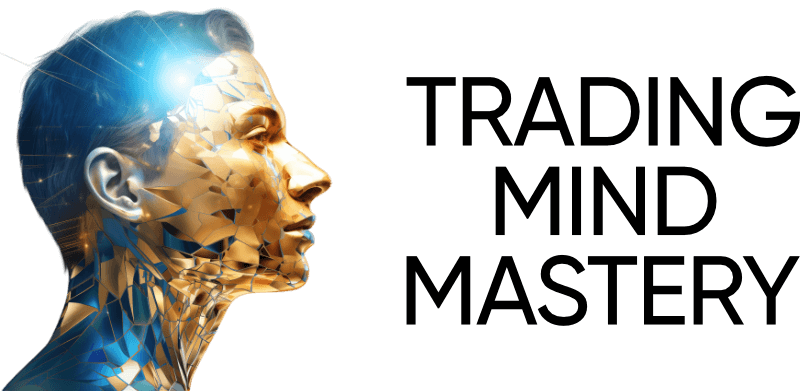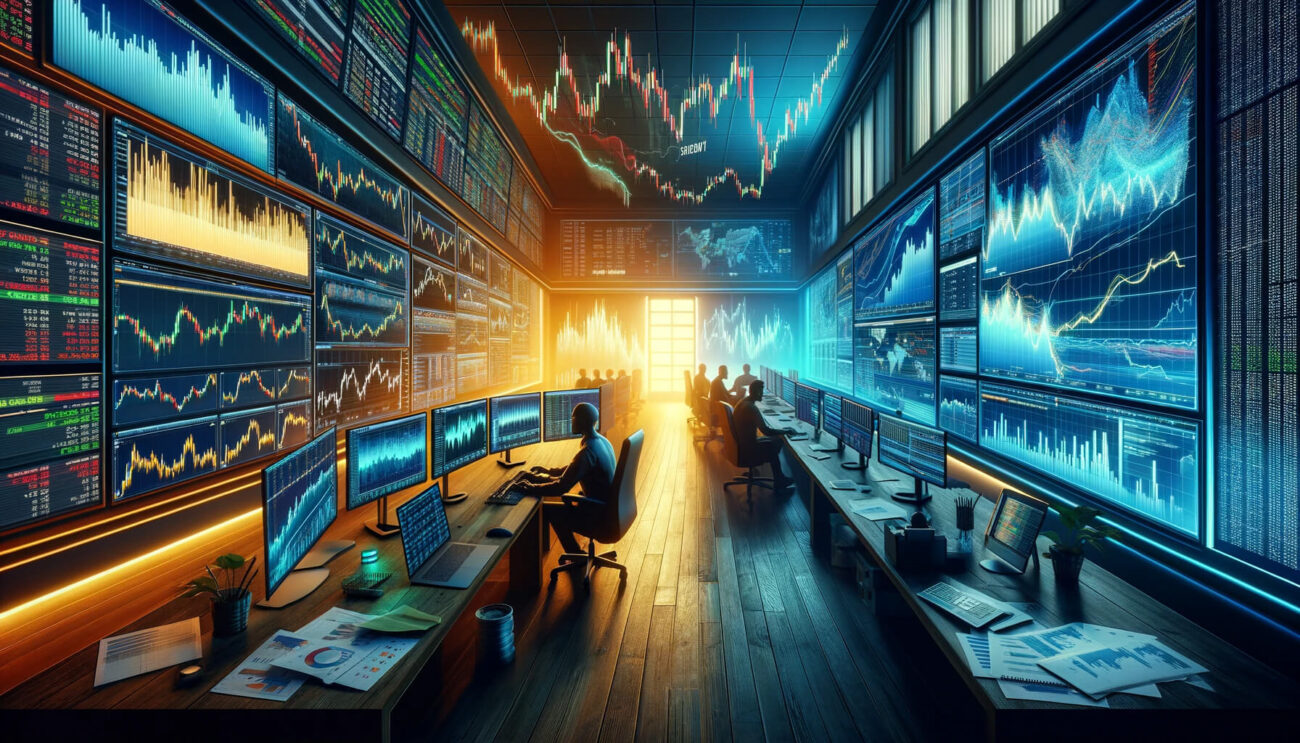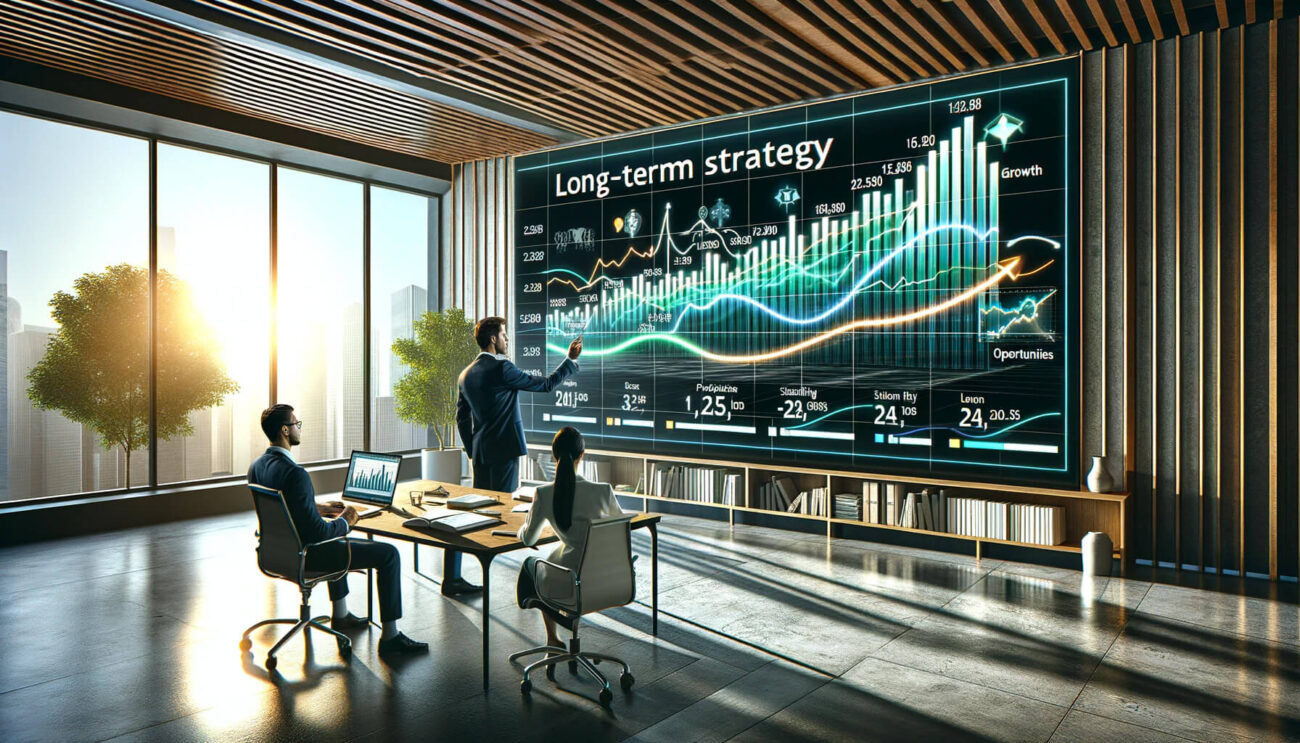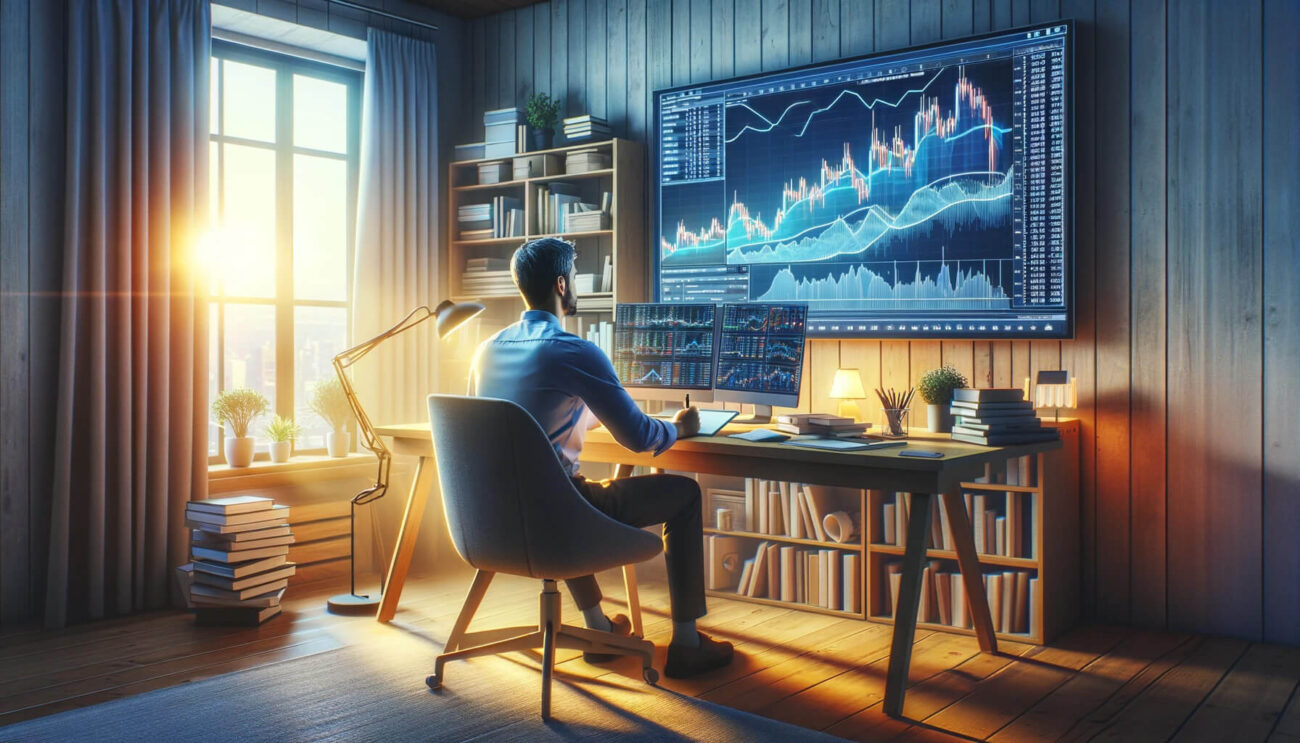Did you know that 90% of new traders fail within their first year of live trading?
When it comes to trading training, the stakes are high. That’s why it’s crucial to understand the advantages and challenges of different methods, such as live trading and simulation. Whether you’re a newcomer to the trading world or looking to improve your skills, choosing the right training path can make all the difference.
In this article, we will explore the benefits and considerations of live trading versus simulation. By delving into these approaches, we aim to guide you in making an informed decision about your trading education journey. So, are you ready to uncover the secrets to success in live trading and simulation? Let’s dive in!
The Power of Live Trading
Live trading offers traders a unique and invaluable learning experience by allowing them to execute real trades in real-time market conditions. By actively participating in the market, traders can gain practical insights into the effectiveness of their trading strategies and develop a deeper understanding of technical analysis.
One of the key advantages of live trading is that it provides traders with immediate feedback on their trading decisions. They can observe how their strategies unfold in real time and make adjustments accordingly, which helps them refine their trading approach and improve their overall performance.
Moreover, live trading exposes traders to the dynamic nature of the market. They can witness firsthand how prices fluctuate, how news events impact market movements, and how different market participants influence price action. This hands-on experience enhances their ability to interpret market signals, identify trading opportunities, and react swiftly to changing conditions.
“Live trading allows you to test your trading strategies against real market conditions and build the confidence needed to become a successful trader.”
Live trading also facilitates the development of discipline and emotional resilience, which are essential qualities for traders. It exposes them to the psychological challenges of trading, such as handling losses, managing risk, and maintaining consistency in decision-making. By experiencing these challenges in a live trading environment, traders can build the necessary mindset and skills to navigate the ups and downs of the market confidently.
Considerations for Live Trading
- Live trading involves real money, so it is crucial to manage risk effectively and set appropriate stop-loss orders to protect capital.
- Traders should be prepared for market volatility and account for potential slippage and fast-moving markets when executing trades.
- It is advisable to start with smaller position sizes and gradually increase risk exposure as traders gain experience and confidence.
By embracing live trading and harnessing its power, traders can accelerate their learning curve, refine their trading strategies, and ultimately increase the likelihood of success in the market.
Managing Risks in Live Trading
Live trading offers an exhilarating path for traders to gain practical experience in the market. However, it is essential to acknowledge the inherent risks associated with live trading. Without proper risk management techniques, the excitement of live trading can quickly turn into substantial losses that can hinder long-term success.
Understanding and implementing effective risk management strategies is crucial for traders to protect their capital and minimize potential losses. By prioritizing risk management, traders can approach live trading with a disciplined mindset, safeguarding their funds while maximizing profit potential.
The Importance of Risk Management
“Do not put all your eggs in one basket.” This famous quote by Warren Buffett perfectly encapsulates the essence of risk management. Diversifying your trades, setting stop-loss limits, and managing position sizes are vital risk management practices that every live trader should embrace.
“Diversify your trades. Spread your investments across various assets and markets to reduce the impact of a single unfavorable event.”
By diversifying your portfolio, you decrease the likelihood of suffering significant losses from a single trade or market event. This strategy helps to mitigate risk and protect your capital, ensuring that no single trade holds the potential to wipe out your entire account.
Setting Stop-Loss Limits
“Plan your trade and trade your plan.” This timeless advice highlights the importance of setting predefined stop-loss levels for every trade you enter. A stop-loss order ensures that you exit a trade when the price reaches a specific point, limiting the potential loss on that trade.
“Set stop-loss orders for each trade. Determine your maximum acceptable loss before entering a position, protecting yourself from substantial losses in volatile market conditions.”
By setting stop-loss orders, you establish a clear exit strategy, removing emotion from your trading decisions. This disciplined approach protects you from catastrophic losses and allows you to reassess your trade if the market moves against your expectations.
Managing Position Sizes
“Never risk more than you can afford to lose.” This rule of thumb is crucial when it comes to managing position sizes in live trading. Position sizing refers to determining the appropriate amount of capital to allocate to each trade.
“Calculate your position size based on your risk tolerance and account size, ensuring that no single trade poses a significant risk to your portfolio.”
By managing position sizes, you can control the amount of capital at risk and maintain consistency in your overall risk exposure. This approach safeguards your portfolio against substantial losses from a single trade gone wrong, allowing you to continue trading with confidence.
Implementing these risk management techniques in live trading sets the foundation for a risk-conscious mindset and responsible trading practices. By protecting your capital and managing risks effectively, you can navigate the live trading environment with confidence, increasing your chances of long-term success.
The Benefits of Simulation
Simulation, also known as paper trading, offers traders a unique opportunity to enhance their trading skills in a risk-free environment. It serves as a valuable tool in trading training, allowing traders to practice various strategies, explore market scenarios, and develop their understanding of fundamental analysis—all without the need to risk real money.
Here are some advantages and limitations of simulation:
Advantages of Simulation
- Practice and Refinement: Simulation provides the perfect platform for traders to practice and refine their trading strategies. It allows them to experiment with different approaches, observe the outcomes, and make necessary adjustments.
- Exploration of Market Scenarios: Traders can simulate a wide range of market conditions and scenarios, helping them understand how their strategies perform in different circumstances. This allows for a more comprehensive view of the dynamics of the market.
- Analysis of Fundamental Factors: Fundamental analysis is a crucial aspect of trading. In simulation, traders can focus on analyzing fundamental factors such as economic indicators, company reports, and news events to gain a deeper understanding of their impact on the market.
- Enhanced Risk Management: By using simulation, traders can also improve their risk management skills. They can practice setting stop-loss levels, implementing risk-reward ratios, and developing disciplined trading habits.
Limitations of Simulation
- Emotional Aspect: Simulation lacks the emotional element that live trading entails. Traders may not experience the same psychological impact when there is no real money at stake. This can affect decision-making processes in real trading scenarios.
- Execution Challenges: While simulation allows traders to practice their strategies, it does not fully replicate the execution challenges faced in real market conditions. Traders may encounter slippage, order delays, and other factors that can impact their trading results.
- Limited Real-Time Market Data: Simulation relies on historical market data, which may not reflect current market dynamics accurately. The absence of up-to-date information can impact the accuracy of simulations and the relevance of results.
“Simulation provides a safe space for traders to develop their skills, test strategies, and gain confidence before entering the live trading arena.”
While simulation has its limitations, it offers a valuable avenue for traders to build their expertise and gain confidence. By leveraging the benefits of simulation alongside live trading experiences, aspiring traders can develop a well-rounded skill set that incorporates both technical analysis and fundamental understanding.
Mastering Technical Analysis in Simulation
Technical analysis plays a vital role in the world of trading. It involves studying historical price data, patterns, and indicators to forecast future market movements. Simulation platforms offer traders a valuable opportunity to master technical analysis strategies and refine their decision-making processes.
Within a simulation environment, traders can utilize sophisticated charting tools, indicators, and patterns to practice their technical analysis skills. By immersing themselves in simulated market conditions, traders can gain hands-on experience without risking real money. This allows them to experiment with different technical analysis strategies and assess their effectiveness in various market scenarios.
Simulation also provides a safe space for traders to develop their understanding of different technical indicators and their applications. Whether it’s moving averages, oscillators, or trendlines, traders can explore how these tools influence their trading decisions. By observing the outcomes of their simulated trades based on different technical analysis techniques, traders can build the knowledge and confidence needed for real-life trading scenarios.
Benefits of Mastering Technical Analysis in Simulation
- Developing Pattern Recognition: In simulation, traders can train their eyes to identify common chart patterns, such as flags, triangles, and head and shoulders formations. Through repeated exposure and practice, they can become proficient in recognizing and using these patterns for more accurate market analysis.
- Testing Trading Strategies: Simulation allows traders to test and refine their trading strategies based on technical analysis. By simulating different scenarios and observing the results, traders can assess the effectiveness of their strategies without risking real capital.
- Gaining Experience with Indicators: Technical indicators are powerful tools used by traders to analyze market trends and make informed trading decisions. Simulated trading environments provide an opportunity to experiment with different indicators, understand their strengths and limitations, and identify which ones align best with their trading style and strategy.
Ultimately, mastering technical analysis in a simulation environment empowers traders to make more informed and confident trading decisions. It allows them to refine their strategies, gain experience with various indicators and patterns, and develop the critical skills needed to navigate the dynamic and ever-changing world of trading.
The Importance of Real-Time Trading Experience
While simulation provides a valuable and safe learning environment for aspiring traders, it lacks the real-time market dynamics and emotional elements that are experienced in live trading. In this section, we will delve into the significance of gaining real-time trading experience and discuss how it prepares traders for the challenges they will face in actual market conditions.
The real-time trading experience offers a unique opportunity for traders to understand the complexities and intricacies of the financial markets. It allows them to witness firsthand the rapid fluctuations in prices, the impact of breaking news, and the psychological aspects that come into play during live trading.
One of the key benefits of real-time trading experience is the invaluable knowledge gained from making actual trading decisions and managing positions in the live market. Traders learn to analyze real-time data, interpret market trends, and make swift and informed trading decisions. This practical experience helps to develop critical thinking skills and builds confidence in executing trades under real-world pressures.
Furthermore, real-time trading experience helps traders to better understand market psychology and the impact of emotions on trading performance. It exposes them to the potential challenges of managing fear, greed, and irrational decision-making, allowing for the development of effective trading strategies that take these factors into account.
By engaging in real-time trading, traders can also gain a deep understanding of order execution, trade management, and risk assessment. They learn to navigate various trading platforms, handle different trade types, and implement risk management techniques in real-world scenarios.
Ultimately, the value of real-time trading experience lies in its ability to bridge the gap between theoretical knowledge and practical application. It provides traders with the opportunity to test and refine their strategies, adapt to changing market conditions, and gain the confidence necessary to navigate the complexities of live trading.
In the next section, we will explore how traders can find a balance between simulation and live trading, leveraging the strengths of each method to enhance their trading skills and develop effective trading strategies.
Finding the Balance: Integrating Live Trading and Simulation
To maximize your trading education, a combination of live trading and simulation can be a winning approach. By integrating these two methods, traders can utilize the strengths of each to enhance their skills and develop effective trading strategies. Let’s explore how you can strike a balance between live trading and simulation.
1. Embrace the Real-Time Experience
Live trading provides the opportunity to experience the market in real-time, with actual trades executed under live market conditions. This hands-on experience allows you to understand the dynamics of the market, react to price movements, and test your trading strategies in a live environment. By actively participating in live trading, you gain valuable insights that simulation alone cannot provide.
2. Harness the Power of Risk-Free Practice
Simulation, on the other hand, offers a risk-free environment for practice and experimentation. It allows you to test and refine different trading strategies, explore various market scenarios, and analyze fundamental factors without risking real money. By simulating trades, you can gain experience and build confidence in your decision-making process before implementing them in live trading.
“Integrating live trading and simulation enables traders to combine the real-time experience of live trading with the risk-free environment of simulation, creating a well-rounded training approach.”
3. Develop a Holistic Trading Strategy
By integrating live trading and simulation, you can develop a holistic trading strategy that takes into account both the real-time market dynamics and the risk-free learning environment. Start by formulating your trading strategies based on thorough research and analysis. Then, implement and test these strategies in simulation to fine-tune your approach. Finally, transition to live trading to validate and optimize your strategies in actual market conditions.
4. Continuously Adapt and Refine
Successful trading requires continuous learning and adaptation. By integrating live trading and simulation, you can adapt your strategies based on the insights gained from both methods. Identify areas for improvement, learn from your experiences in live trading, and refine your approach in simulation. This iterative process of learning and refinement will help you grow as a trader and increase your chances of success.
- Combine live trading and simulation for a comprehensive trading education
- Gain real-time experience and insights through live trading
- Utilize simulation for risk-free practice and strategy refinement
- Develop a holistic trading strategy that incorporates both methods
- Continuously adapt and refine your strategies based on insights gained
By finding the right balance between live trading and simulation, you can create a robust and effective trading education plan. Remember to leverage the strengths of each method and continuously assess and refine your strategies. With a well-rounded approach, you’ll be better equipped to navigate the complexities of the financial markets and achieve your trading goals.
Evaluating Your Progress: Setting Clear Goals
As you embark on your trading education journey, it’s essential to regularly evaluate your progress and set clear goals. Live trading and simulation are powerful tools in your arsenal for enhancing your trading skills, but it’s crucial to measure your development and refine your trading strategies along the way.
Evaluating Your Development
To assess your progress, take a step back and objectively analyze your performance in both live trading and simulation environments. Keep track of key metrics such as your win rate, average profit/loss per trade, and risk-reward ratio. Consider your ability to adapt to changing market conditions and the effectiveness of your trading strategy. Identifying areas of strength and areas that need improvement will help you focus your efforts for further growth.
Refining Your Trading Strategies
Based on your evaluation, refine your trading strategies accordingly. Consider adjusting your risk management techniques, entry and exit criteria, and timeframes based on the insights gained from both live trading and simulation. Take advantage of the valuable experiences and lessons learned to optimize your approach and increase your chances of success.
Measuring Your Success
Determining your success goes beyond the numbers. While profitability is important, it’s equally vital to consider other factors such as emotional control, discipline, and adaptability. Reflect on how well you managed your emotions during challenging market situations and whether you adhered to your predefined trading plan. A holistic evaluation of these aspects will provide a comprehensive measure of your overall progress.
Remember, setting clear goals is essential to stay motivated and focused on continuous improvement. Regularly revisit and revise your goals as you achieve milestones and gain new insights. With a structured approach to evaluating your progress, you’ll be on the path to becoming a confident and successful trader in both live trading and simulation environments.
Conclusion
By engaging in both live trading and simulation, traders can effectively enhance their training and development in the dynamic trading world. Live trading offers the invaluable experience of executing real trades in real-time market conditions, allowing traders to gain insights into the effectiveness of their strategies and deepen their understanding of technical analysis. However, it also carries inherent risks that require proper risk management techniques.
On the other hand, simulation provides a risk-free environment for traders to practice their skills, test different strategies, and analyze fundamental factors without risking real money. It offers an excellent platform for mastering technical analysis and refining decision-making processes. However, it lacks the real-time market dynamics and emotions experienced during live trading.
Therefore, the key to success lies in finding the right balance between live trading and simulation. By utilizing the strengths of each method, traders can continually learn, adapt, and refine their strategies. It is important to set clear goals and evaluate progress regularly to ensure ongoing development and improvement. Whether you choose to focus more on live trading, simulation, or incorporate elements of both, the ultimate goal is to enhance your trading skills and achieve success through a comprehensive understanding of fundamental analysis and effective trading strategies.








